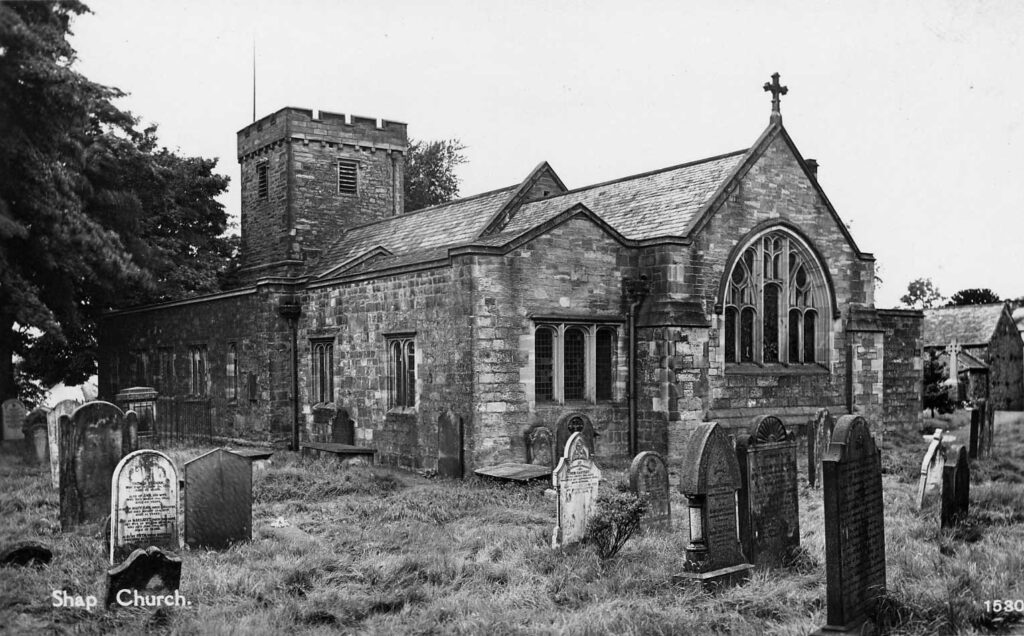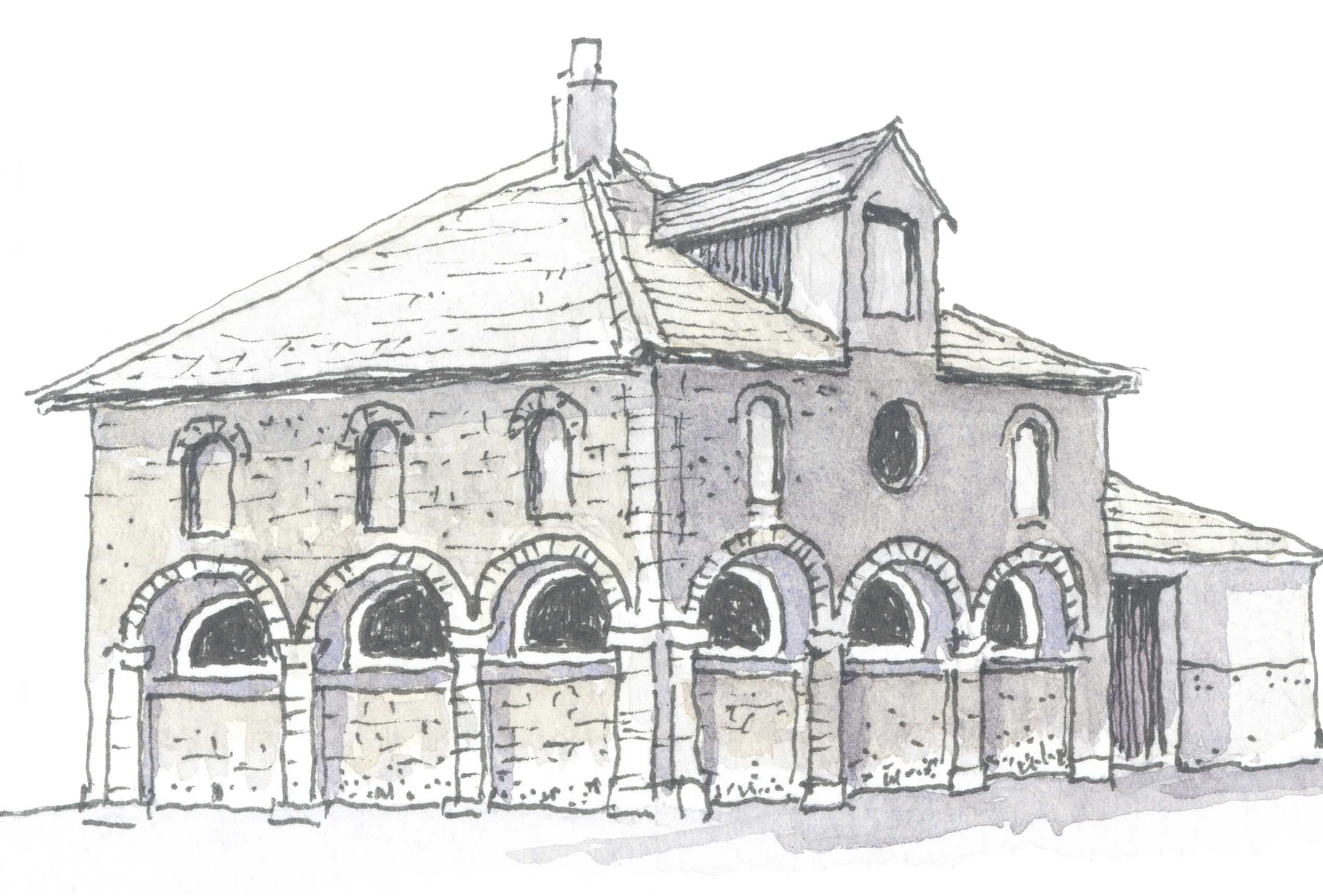
The weather affected the turn out for Shap Local History Society’s February meeting, but those who made the effort were well rewarded with a most interesting talk on the history of St. Michael’s church by their Chairman Jean Jackson, who had been a church warden for 30 years.
She began by quoting from Rosa M. Carey’s Novel ‘Queenie’s Whim’ which is set in Shap, where the heroine is shown ‘the prettiest peep of all’ a view from the Market Place across the great field to the church on the hill, indicating how prominent the building was in the Victoria period.
The audience was told that there had been a church in Shap from about 750, with the stone structure being built in about 1150 proving that the church had been long established before the Premonstratensian order built Shap Abbey.
Jean described the various changes to the building, the oldest fabric to survive is the arcade from the Norman period, but little more is known about that church except that records show the Norman tower was replaced in 1828. While the new tower was being rebuilt one of the bells was hung on one of the huge sycamores which stood on the west of the church. A whole new peal was installed into the new tower. At that time there had been a south porch as the entrance, the foundations of this can still be seen; this was demolished and the main entrance was made through the west wall of the new tower. The audience was told that this caused some criticism because the bell ringers could come and ring for the service then slip out unnoticed without attending the service.
The chancel had been build on the orders of Bishop Nicholson in 1756 with stone from the abbey.
The present building largely dates from the great reordering in 1899 during the incumbency of Rev Joseph Whiteside.
Regular attendance was of great importance, and during the reign of Queen Elizabeth the First, churches were required to send the Churchwardens out ‘To search alehouses on Sundays and if they find any persons therein during divine service they are liable to a forfeiture of three shillings and fourpence and the master of the house ten shillings`, so non attendance carried a cost that would not have been easily afforded.
Several of the Vicars had been great characters in their own right, and earned the respect of the parishioners. Up until the 19th Century vicars had no formal residence and often lodged out in the parish; James Holme, was the first to live in the new Vicarage built in 1814, but in 1821 John Rowlandson the next incumbent was complaining to the diocese about it poor condition. This vicarage was demolished and replaced in the late 1960s.
Jean then spoke about the father and son who where vicars in the 19th century; Stephen Whiteside vicar for 30 years and son Joseph Whiteside who succeeded him. Joseph was an aspiring young man who was keen to see change, and he led a major reordering of the church in the last years of the 19th century. Members were then shown images of the church at that time with its low chancel arch, triple-decker pulpit and box pews, and then some showing the demolition of large sections of the old church. From Easter 1898 services were held in the market hall, but on 1st June 1899 a service of celebration was held in the new church; a remarkable feat in such a short period of time. The project was not without its problems and there was a lot of local opposition to the changes.
In order to raise the necessary funds for the work appeals were sent out, and the responses from locals and former Shap residents living elsewhere was astounding; a two day bazaar was held, a lengthy description of this is contained in ‘Shappe In Bygone Days’, by Joseph Whiteside. The wide variety of goods for sale on the stalls was amazing; and the event was so popular that numbers had to be controlled.
Several benefactors donated goods to furnish the new church; one story recalled the cross and candlesticks donated by the Mayor of Preston, Alderman William Roper, who was had been born in Shap. These were considered too ‘high church’ by many and mysteriously vanished the day after their dedication, only to be discovered over 30 years later in the attic of a local house, concealed in a box specially made to contain them. These pieces were restored to the altar and continue in regular use.
A new font turned from a single piece of Shap pink granite was donated by William Brebner, the manager of Shap Granite Company, and later dedicated to his memory; Shap church has four fonts; the oldest, dating from the time of the first stone building, had laid about in the churchyard then removed to a garden in a neighbouring village, it was sold by auction in the 1990s and was due for export to America, a last minute appeal raised sufficient funds to purchase it and return it to the church where it stands in the porch. A Victorian font donated by Mrs Bindloss is still in the church, often containing a floral arrangement, and another undated font is a simple basin which sits on a windowsill.
Jean touched on the invaluable work done by Mary Noble who published the Shap registers up to 1830 in book form, making them readily accessible. She also spoke about the much regretted work on the old churchyard in the 1980s that saw the removal of many old memorials. The talk concluded with images of the present church and the stained glass windows, the most recent being the Millennium window in the morning chapel that portrays the history of Shap.
A vote of thanks was given by Jean Scott-Smith, who told members that Mrs Jackson had been interviewed in Radio 4 about the value of Census returns in the light that next year’s is to the the last taken in the traditional way. Liz Amos reported that refurbishment work at the Heritage Centre was progressing well.
The next meeting will be on Monday 23rd March when Joseph Jackson will speak on the history of Brough Castle and the great road, Joseph will also be leading a visit to Brough Castle in the summer.
